Better Headphone Testing

Time flies when you're having fun. I bought the equipment to measure headphones for Hi-Fi News as long ago as May 2007, since when I've tested around 115 different models for the magazine. These have included circumaural (over-ear) designs, supra-aural (on-ear) and insert, active and passive, priced from under £100 to almost £5000.
The measurement hardware is still in good shape 12 years on, and has been updated in various respects. But for a while I've been wanting to expand on and improve the tests I perform – and now I have. This article explains how and why.
In some respects headphone measurement is similar to speaker measurement. But it's complicated by the fact that a headphone interacts directly with the ear. That is, with the ear canal only in the case of insert earphones but with the outer ear (the pinna) as well in the case of circumaural and supra-aural headphones. This is a complicating factor in two respects. First, the measurement method needs to mimic this interaction if it's to produce meaningful results; and second, the pinna and meatus (ear canal) have an effect on frequency response, so that the generally accepted ideal in loudspeaker testing – a flat on-axis response – doesn't apply with headphones. To obtain a 'flat is correct' frequency response requires the application of response correction, and that simple-sounding process is the cause of substantial historical and ongoing controversy.
Silicone Ear
Setting that aside, what we need in order to measure headphone frequency response (and other parameters) accurately is an artificial ear that closely mimics the acoustical behaviour of a real ear. And not just the acoustical behaviour: the mechanical behaviour too given that supra-aural headphones in particular, because they press on it, distort the pinna and thereby modify its acoustic effect. For this to be reflected in the measurements, the artificial pinna must deflect similarly to a real pinna when pressed on.
Fig 1 shows the artificial ear that I use, from the Danish acoustics company GRAS. (Although not, I stress, the layered MDF 'head' that it's mounted in – I constructed that in 2007 and never did get around to sanding or painting it!) The GRAS items here are the black cheek plate against which the earpads of circumaural headphones seal, mounted in which is a left artificial pinna, moulded from silicone rubber, originally created from anthropometric measurements of real human ears by Knowles Electronics in the US for its Manikin for Acoustic Research (KEMAR).
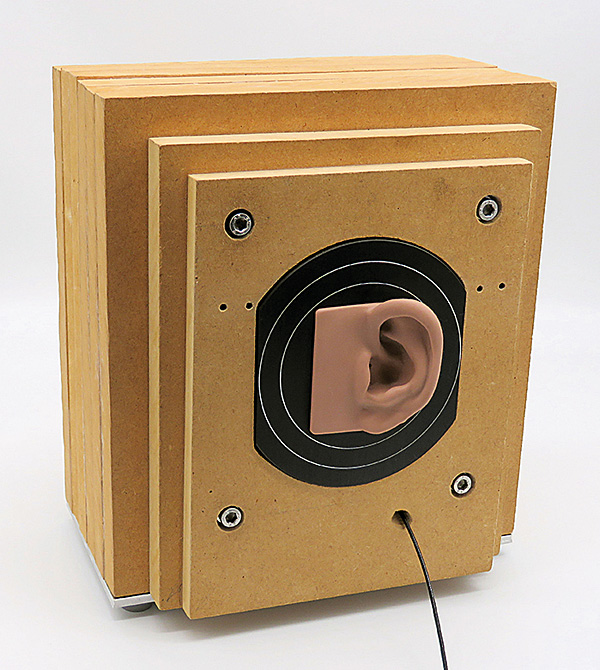
The rights to KEMAR were bought by GRAS, which now manufactures the KEMAR head and torso simulator and all its component parts, including the artificial pinnae (there are various types, of which more shortly). The essential component you can't see in this picture, hidden behind the cheek plate, is the ear simulator which contains the measurement microphone and mimics the acoustical impedance of the ear canal. This is pictured in Fig 2 together with the 26CB preamplifier (actually it's an impedance converter) for the embedded microphone.
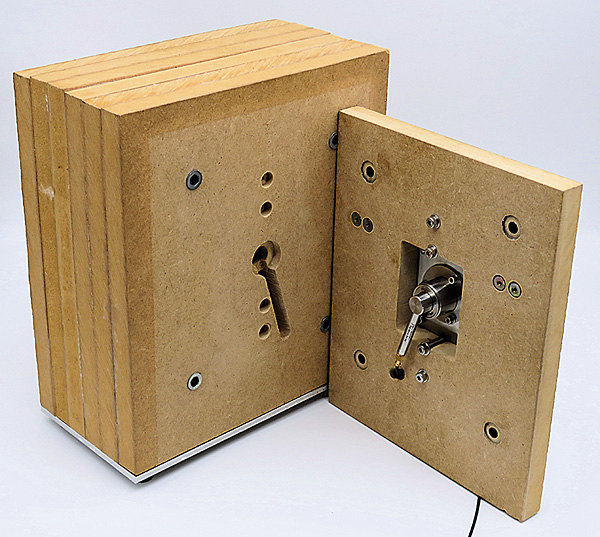
If you want to perform credible headphone measurements, you have to buy pukka test equipment such as this – and it's expensive. Many of the headphone measurements you see online, performed by amateur enthusiasts who aren't prepared to make such an investment, are conducted using a cheap measurement mic pushed through a hole drilled in a flat plate. Inevitably the results bear little resemblance to those obtained using proper measurement resources.
Six New Tests
GRAS has recently updated both its artificial pinnae and its ear simulator. The new anthropometric pinnae attach differently to the cheek plate (Figs 1 and 2 show an old pinna and the old mounting arrangement), interface differently with the ear simulator and are softer to more closely match the mechanical behaviour of real pinnae. I bought a left/right pair of the new pinnae last year but don't yet use them for HFN's headphone measurements. This is because they generate different frequency response(s) in the lower treble which makes the results difficult to compare with my legacy measurements. This is an issue I've yet to resolve.
The new GRAS ear simulator is superior in that it largely suppresses the 13kHz resonance of the old IEC711 ear simulator, making results in the last audible octave, 10-20kHz, more reliable. GRAS has let me have a sample of the new simulator on long-term loan and I now use it for all HFN's headphone testing. For testing insert earphones I don't use the full artificial ear but the ear simulator alone, fitted with a conical coupler that makes a reliable seal easy to achieve. The ear simulator is suspended on 3mm shock cord within a specially made test frame in order to isolate it from external vibration (see Fig 3).
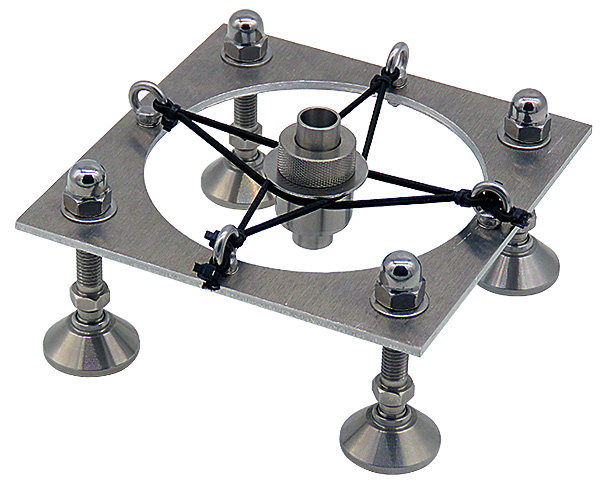
These hardware improvements are important but only a small part of this story. More significant is the expansion of the range of tests for which the hardware is used. I've looked to address six aspects of performance that were not routinely measured previously:
1) the loss of low frequency output caused by compromising the earpad seal,
2) the head clamping force exerted by the headphone,
3) the headphone's isolation performance (by which I mean its blocking of external sounds),
4) the headphone's emission performance (how loud it sounds to others nearby),
5) the resonance behaviour of the drive units used, and
6) the resonance behaviour of the headphone structure, particularly the headband.
You'll perhaps have noticed that distortion versus frequency measurement isn't mentioned. That's not because I lack the software to perform it; rather I'm not prepared to perform headphone distortion measurements as badly as everyone else does. To be more specific, I want to make genuine measurements of distortion, not distortion contaminated with noise. This is a whole topic in itself and will have to await another occasion for a detailed explanation. For now, let's delve a little deeper into the six new measurements listed (adjacent).
Seal Of Approval
Some headphones – closed-back designs in particular but not only closed-backs – are highly dependent on there being a good seal of the earpad to the head if they are to achieve their intended bass extension. If that seal is disrupted, as it easily can be by hair or spectacles, then the headphone's bass output suffers.
I now test for this by simulating the presence of spectacles and hair by, first, attaching a thick temple bar to the artificial ear (see Fig 4), and second by simulating hair using a shaped pad of 6mm-thick hemp mat (see Fig 5), chosen because hemp fibres have a similar range of thicknesses to human hair.
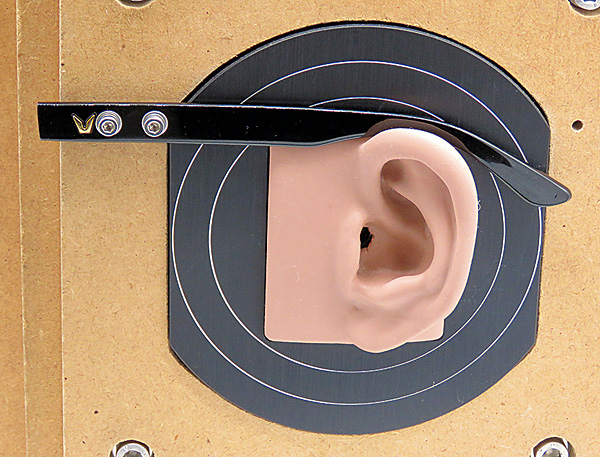
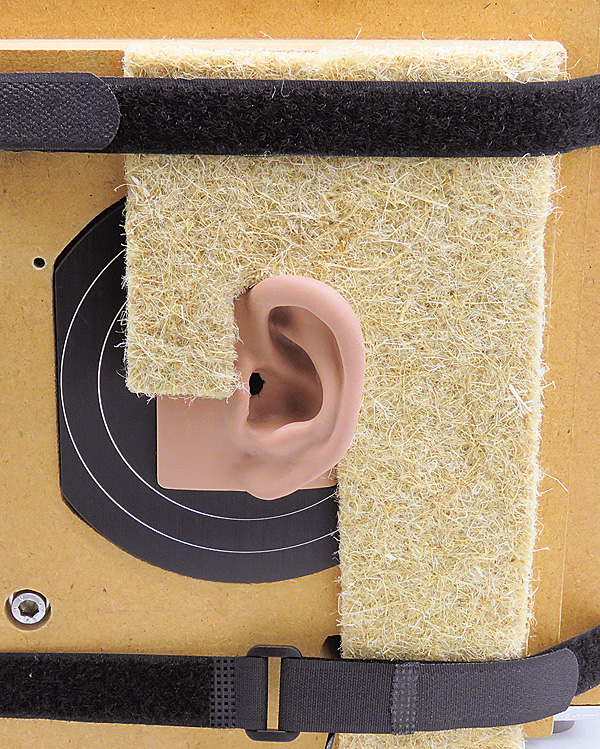
Figures 6a and 6b show results of this test for two recently reviewed headphones: the Quad ERA-1 [HFN Aug '18] and the MrSpeakers Ether 2 [HFN Jul '19]. In each graph the black trace is the reference response, obtained with good earpad sealing; the red trace is the response with the temple bar in place; and the green trace
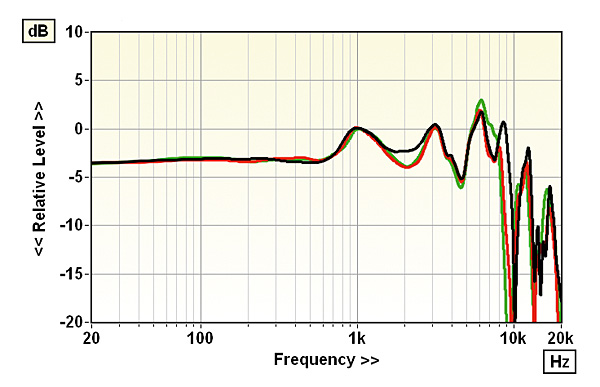
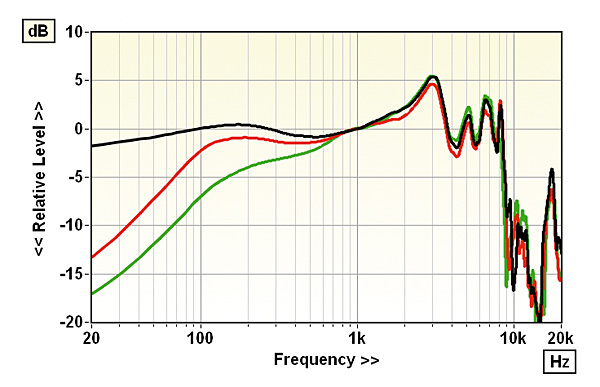
Tonal Balance
Each response is actually an average of ten separate measurements between which the headphone is removed from and re-seated on the artificial ear. As you can see, the ERA-1 is barely affected by spectacles or hair, whereas the Ether 2 – despite also being an open-back planar magnetic headphone – is severely affected if the earpad seal is breached. This graph explains, at least partly, why subjective impressions of some headphones' tonal balance can vary so significantly between listeners.

























































